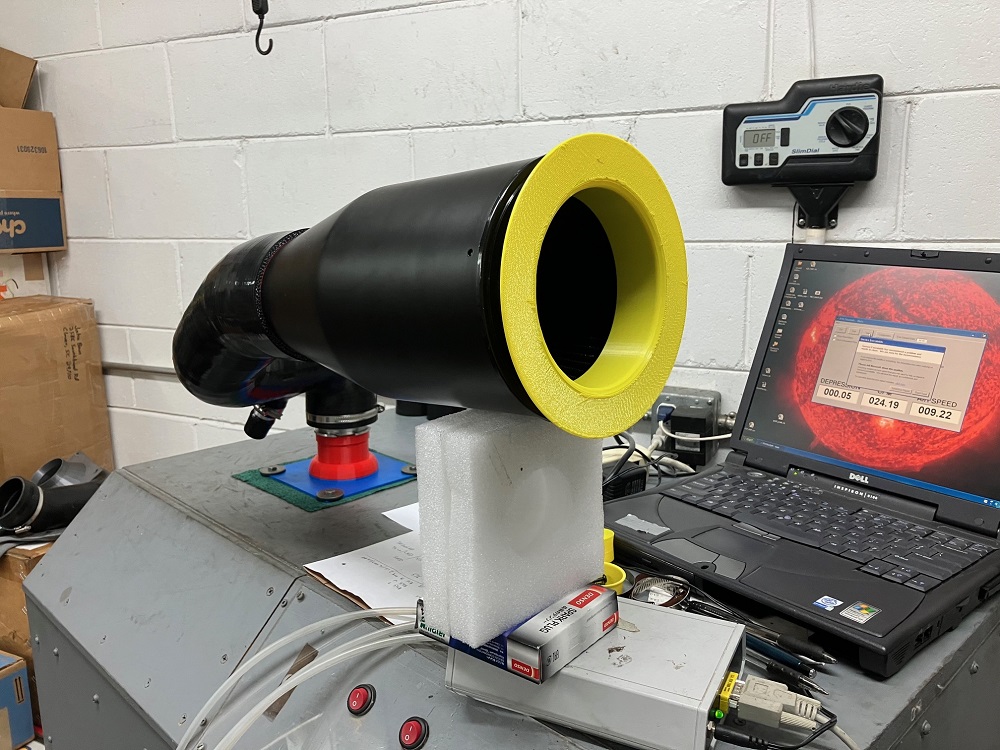Background:
After making a post two days ago about identifying the source of disinformation being repeated by some consumers, a couple of people questioned if the flow bench tests are sufficient, and if Ed Susman’s accusations are valid. In a future post, I’ll work on evaluating Ed’s claims and any evidence for or against them.
For the time being, I’ll point out a technique called a “sanity test“.
A sanity test is often a quick check on something to see if it makes sense at a basic, surface level.
Sanity Test Example:
On one hand, there are a number of disparaging comments from Ed Susman from EQT tuning about flow testing of the intakes being flawed, the results useless, and the idea of using the flow test results “asinine“:



Ed is a software tuner and catalog reseller of aftermarket automotive performance parts, relevant to this example is one product he resells, the Blaze Performance Intake.
Alternate information:
On the other hand, there is Blaze Performance, a designer and manufacturer of automotive intakes, notably the Blaze Performance intake that Ed resells.
Blaze Performance shipped from South Africa to me in the U.S. one sample of every intake component in their catalog for the purpose of having me perform flow bench testing with these various parts.


Flow testing of the Blaze Performance parts ran for one month with over 70 different configurations tested.
Blaze provided design files for a couple of parts for me to 3D print so that they could explore how these changes to their intake would affect the flow performance.
Once testing had been completed Blaze Performance wanted to publish the comparison data I recorded on the business’s Facebook page, but my policy when testing a vendor’s parts is that the results products I produce are not to be used in advertising.

Final Step:
The last step of the “sanity test” process is to weigh a question against available information.
In this example, the question is whether or not the claims Ed Susman is making about the flow tests being flawed and unreliable are true or false.
Information supporting the True alternative is that Ed Suman is a software tuner and is a reseller of the intake that was flow tested.
Information supporting the False alternative is that the designer and manufacturer of intake parts invested the time and money to ship their product line-up overseas to have flow testing performed with my flow bench by me. They requested scores of configurations be tested and provided new alternative prototype parts during testing. The company also requested to use the test results in promoting their intake products.
The “sanity test” ends with a preliminary conclusion about the claims Ed Susman has made, True or False.
Conclusion:
The “sanity test” is a quick check and in this case, a more thorough analysis of the claims by Ed Susman will also be performed.




So if your flow bench is inadequate, why would Blaze trust your testing / data to publish the results? I’ve said it multiple times that others should be collaborating and corroborating the data. At the end, it only helps us as an enthusiast’s community to get all the data to help make informed decisions when purchasing mods for our cars. Instead of having the mindset of, “cause I said so…my butt dyno says…someone else’s dyno proved it, but I don’t have to show you,” nonsense. Again, I appreciate the work and time you put into the testing and it has helped me decide on what is worth putting into my car. It’s hard to come across unbiased data which is why I keep coming back to your blog.
I agree, having some people work together would be much more beneficial.
Dubious claims for aftermarket parts have been the standard practice of some vendors for many years. What is ironic is that they go onto social media and promote themselves with suspect claims and get away with it. Most of the Facebook groups are moderated by enthusiasts, not businesses. What the moderators ought to do is tell the vendors that any claims they make need to be substantiated with facts (what they should be doing already since the FTC requires that). If they make claims that they can’t back up, they get removed from the group.